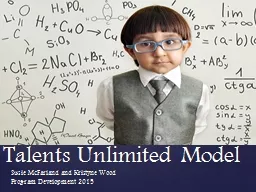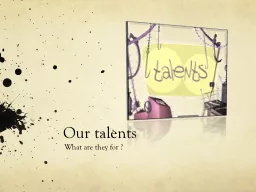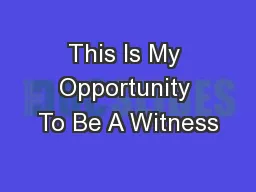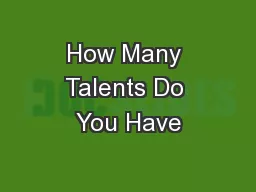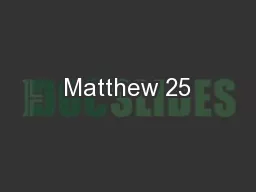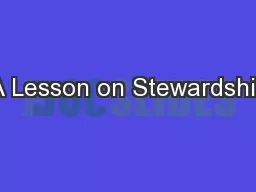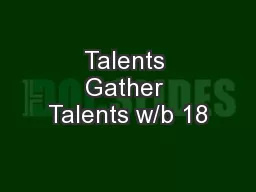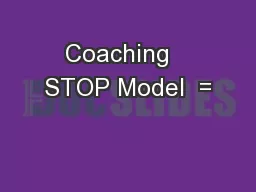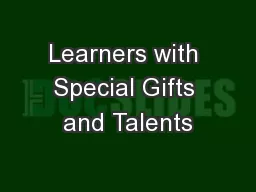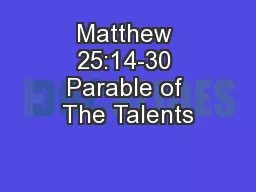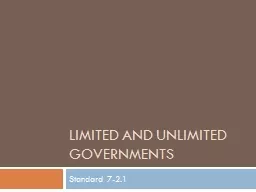PPT-Talents Unlimited Model
Author : lois-ondreau | Published Date : 2016-07-25
Susie McFarland and Kristyne Wood Program Development 2015 Gifted students represent a vital resource that has unlimited potential We need to make sure that these
Presentation Embed Code
Download Presentation
Download Presentation The PPT/PDF document "Talents Unlimited Model" is the property of its rightful owner. Permission is granted to download and print the materials on this website for personal, non-commercial use only, and to display it on your personal computer provided you do not modify the materials and that you retain all copyright notices contained in the materials. By downloading content from our website, you accept the terms of this agreement.
Talents Unlimited Model: Transcript
Download Rules Of Document
"Talents Unlimited Model"The content belongs to its owner. You may download and print it for personal use, without modification, and keep all copyright notices. By downloading, you agree to these terms.
Related Documents

